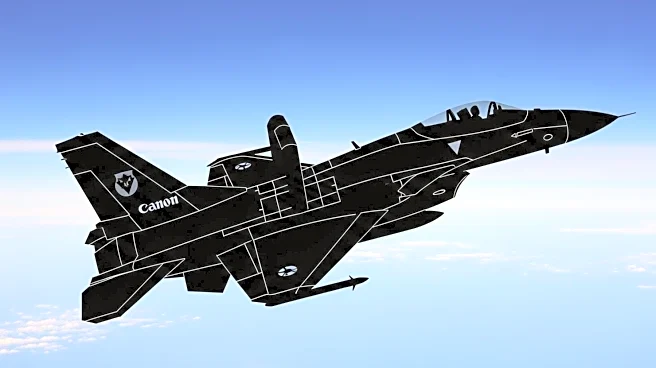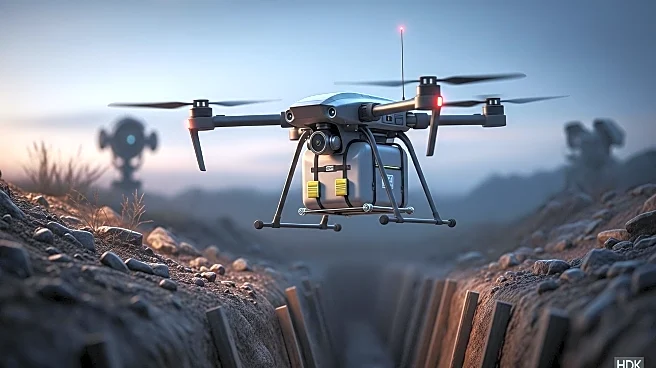What's Happening?
The defense industry is experiencing a shift as smaller, technology-focused firms like Anduril Industries and General Atomics gain prominence. These companies are behind the Air Force's newest drones, YFQ-44 and YFQ-42, which are undergoing ground testing. The rise of these firms is reshuffling the list of the world's top 100 defense companies, as advancements in artificial intelligence and drone warfare prompt militaries to rethink their strategies. Defense revenues grew dramatically in 2024, reaching $661 billion, driven by geopolitical shifts and increased military spending worldwide. Smaller tech firms are seeing profits grow, with companies like Palantir Technologies and Kratos Defense and Security Solutions emerging on the list.
Why It's Important?
The growing importance of tech firms in the defense industry reflects a broader trend towards integrating advanced technologies into military operations. This shift is significant as it challenges traditional defense companies and highlights the increasing role of AI, drones, and robotics in modern warfare. The rise in defense spending worldwide underscores the urgency for nations to bolster their military capabilities in response to geopolitical tensions. Smaller tech firms are well-positioned to capitalize on this demand, offering innovative solutions that enhance military effectiveness and reshape defense strategies.
What's Next?
As tech firms continue to gain traction in the defense industry, they are likely to play a pivotal role in shaping future military capabilities. The Pentagon's increasing use of Other Transaction Authority agreements allows for more flexibility in partnering with nontraditional defense contractors, accelerating the development of new technologies. This trend is expected to continue, with defense firms focusing on tech and drones having a competitive advantage. The emphasis on advanced technology is bipartisan, with both the Trump and Biden administrations prioritizing tech initiatives. Future conflicts may further drive the demand for AI and drone technologies, leading to even greater shifts in the industry.













